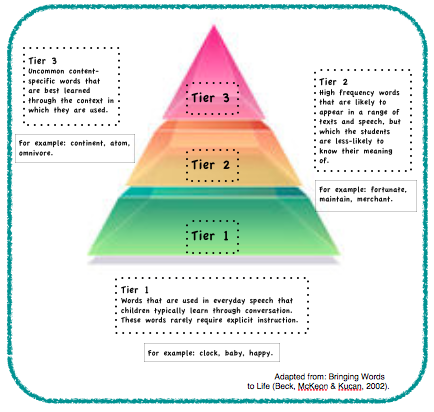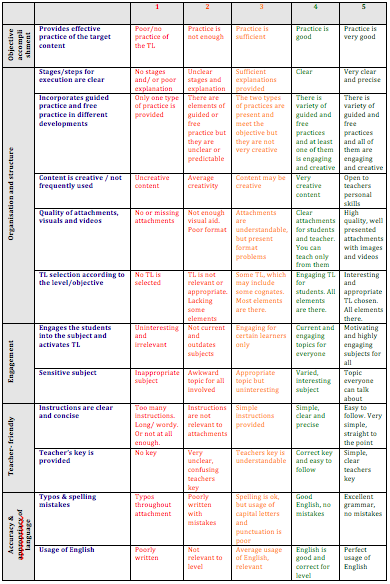Any conscientious teacher knows that choosing words to teach is not as easy as it seems. Sure you can deal out words left, right & center. However, would your students understand, grow & be empowered? Fortunately, there is a nifty little 3 tier model that helps teachers enable their students to broaden their language capacity.
 Examples: come, hear, happy, bed
Examples: come, hear, happy, bed
The first tier refers to basic, everyday words that are used a lot (i.e. they have a high frequency). This means that they can be picked up through conversation, but it might be necessary to teach them if students do not know them. The good thing about these terms when choosing words to teach is that they usually only have one meaning which means it could be easy to demonstrate or convey their meaning. These words can also be taught by means of cognates (such as family –
familia in Spanish).
Examples: hilarious, endure, arrange, masterpiece
This tier refers to words spreading over multiple domains leading to a very high frequency rate. This is due to the fact that they have multiple meanings (depending on the word´s context) & therefore also more challenging to demonstrate.
In the ESL world, students are exposed to these kinds of words through the teacher´s instruction & through texts. If it so happens that the student is already familiar with the word, teachers then have the task to give a broader understanding of the word & so enables students to use the target vocabulary with greater proficiency.
Now, when choosing words to teach, this tier is considered the most important as it adds richness to students´ vocabulary, making their oral expression more descriptive & precise.
Examples: asphalt, isotope, valve, molecule
The third tier generally refers to words with low frequency. This is because these words are associated with specialized vocabulary from a specific domain (such as jargon used in engineering, business English or in the medical field). When choosing words to teach it is best to teach these words only when it is truly necessary especially because these words are not as easily demonstrable.
The most important thing to remember when choosing which words to teach consider how
useful it is for your students. How often will they use it? In their daily life or only on certain occasions? The key here is to empower.
Also, consider if it will grab their attention – is it
interesting? Students will only engage with words that are necessary for them if it grabs their attention. It is therefore important to set it in
context by
explaining the new word with the language that they understand.
Furthermore, make sure that this contribute to a
broader understanding of the language as a whole by ensuring that the vocabulary
relates to other words they are learning.
As an example, consider the words “frugal”, “lofty”, “surprise” & “encourage”. If you had to rank these words from best to worst using the above criteria, how would you go about doing it?
Watch the
clip of Dr Isabel Beck explaining the importance of tiers 1 & 2. Remember that she discusses the tier model of choosing words to teach natives specifically. Think of what the differences are between teaching native speakers & ESL students as well as how you as the teacher would adapt this approach to make it suitable, dynamic & engaging for your own ESL classroom.




